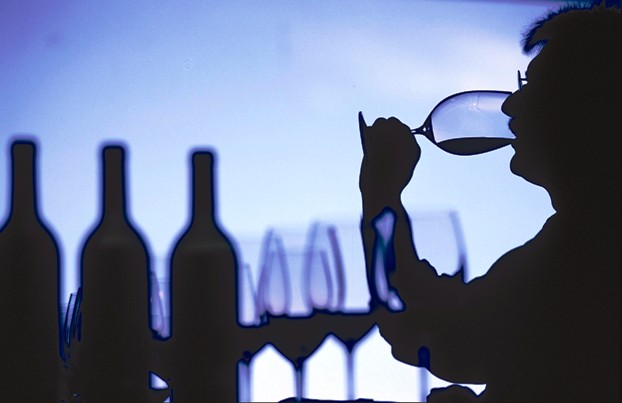Wine tasting can be a tricky business. You go to a wine tasting event or a cellar door, and there are people in there swirling, sniffing, and finally sipping, before spitting. What is all of this? Why are they doing these things and how does it enhance the tasting experience?
Well we’re here to tell you, as really, although it looks tricky, it’s actually quite simple.

Look
First look at the wine, take the glass, and take a good look at it, tilting it away from you and looking at the colour of the wine as well as the colour it leaves on the rim edges. With red wine, the redder the rim edges the younger it is, and the more orange/brown the rim edges, the older the wine is. You can tell the age of a white wine by its colour – if it is very dark then it will be a vintage white.
Swirl
Always wondered why people swirl the wine before sniffing and tasting? Swirling the wine is an important part of wine tasting; it evaporates some of the alcohol and unleashes the aroma inside the wine. Don’t swirl the wine until you have had a very quick sniff of the wine, after your first sniff, swirl, and then take a deeper inhalation of the aroma inside the glass.
Smell
Smelling the wine before you taste it is a critical part of the wine tasting process. First take a quick sniff to gain a first impression, and then swirl for 10-12 seconds.
Then put your nose down into the glass, and inhale deeply through your nose, taking in all of the aromas of the wine. What is your second impression?
Taste
After smelling the wine and deciding what you smell, start with a small sip. Let the wine spread across your tongue and around your mouth before swallowing. This is the Attack Phase. It is the first impression the wine makes as you taste it, and is comprised of tannin levels, acidity, alcohol content, and residual sugar.
Then it’s the Evolution Phase, where you taste and decide the flavour profile for the wine. This is also the phase where you taste the actual taste of the wine on your palate. The Finish, or final phase, is the aftertaste, and how long the wine’s flavour impression lasts after you have swallowed. At this phase you also decide if the wine was bitter at all, and if the taste stays in your mouth or disappears quickly.
